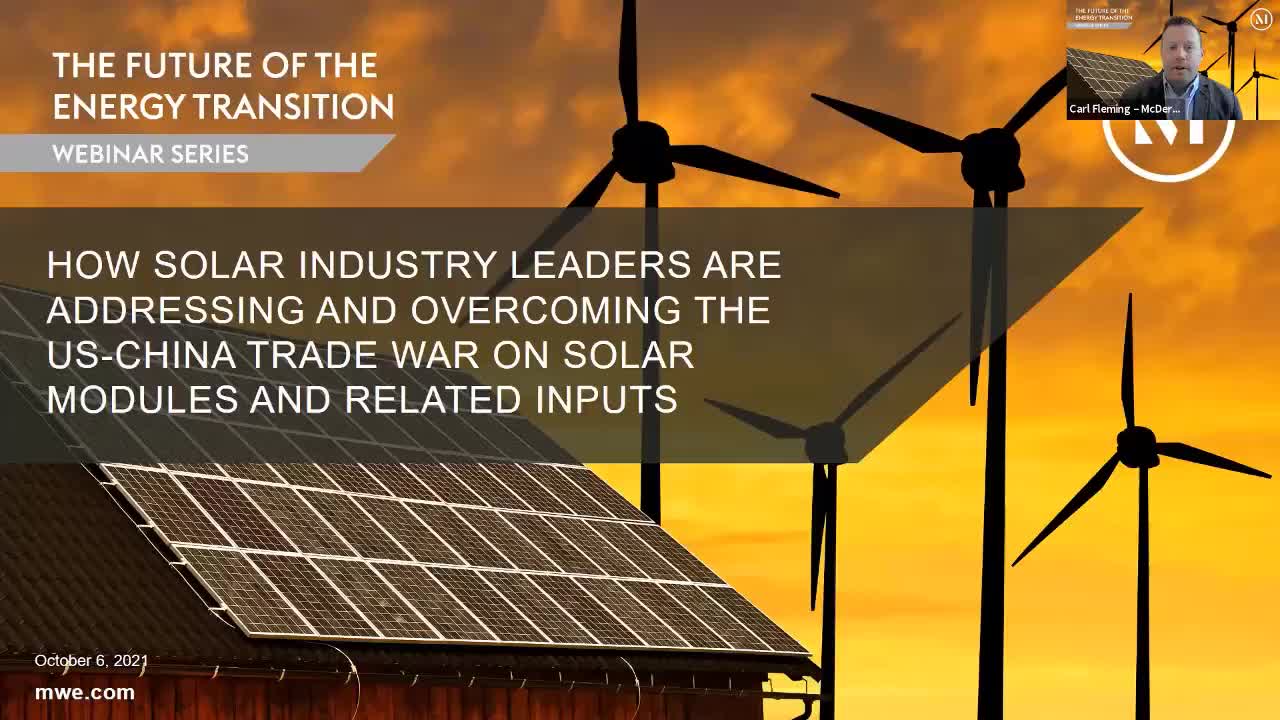How is technology affecting the energy industry? In the latest webinar in the Energy Transition series, McDermott Will & Emery Partner Parker A. Lee hosted Shawn Helms, co-head of McDermott’s Technology and Outsourcing Practice Group, Nadine Herrwerth, managing director at TWTG, and BJ Walker, managing director at Tudor, Pickering, Holt & Co for a 30-minute discussion where they opined on the current and future impact technology plays on conventional and renewable energy companies.

Below are key takeaways from the webinar:
1. Industrial Internet of Things (I-IOT). I-IOT products and services can be used to improve site safety and efficiency. I-IOT products have the capability to monitor equipment, such as valves and temperature sensors on machinery, and record data on external dashboards for analysis and alerting. Through the use of data analysis, data gathered by I-IOT products can identify trends, build models and detect future equipment failure. As a result, I-IOT products and services can increase the efficiency, reliability and safety of equipment.
Though the application of I-IOT devices is relatively new to the industry, these products are capable of being retrofitted to established and already operational sites.
2. Technology Companies and Energy. While technology companies are large consumers of energy output, they can also provide significant insights and intelligence in regard to energy use and production. Synergies between technology and energy industries are continuously evolving and providing improvements in energy investments, efficiencies and reliability. For example, drones are capable of leveraging artificial intelligence to increase efficiency and consistency of equipment monitoring and inspections, particularly equipment that is located in remote areas (such as offshore).
3. Investor Focus on the Energy Space. An important theme in the oil and gas industry is the recent focus on transforming the industry to a generator of cashflow. In attracting new investors to the energy industry, particularly as new technologies are introduced, investors should know there is typically a longer wait period to receive a return on investment than what a general investor would commonly expect. In addition to general investors, technology companies are investing in renewable energy sources for purposes of environmental responsibility and in order to power their own enterprise. It is expected that this trend will continue to grow in energy intensive areas, such as the cryptocurrency space.
4. Technology in Traditional Oil and Gas. Although not widely appreciated, the oil and gas industry has always been heavily reliant on technology and an area where revolutionary technologies are developed—and that is certainly the case today. Because oil and gas professionals are proficient with, and conversant in, the application of new technologies, look to those professionals to be industry leaders in the energy transition as new businesses and products are developed.
To access past webinars in this series and to begin receiving Energy updates, including invitations to the webinar series, please click here.
read more

 Subscribe
Subscribe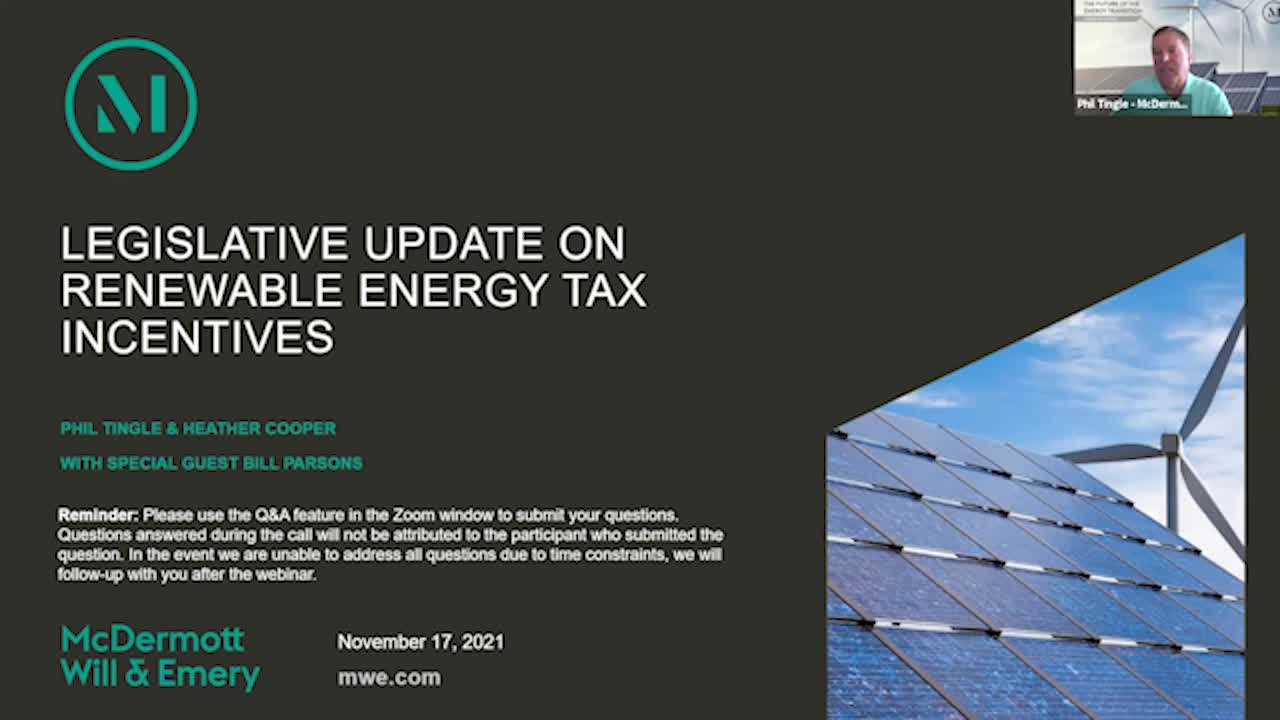
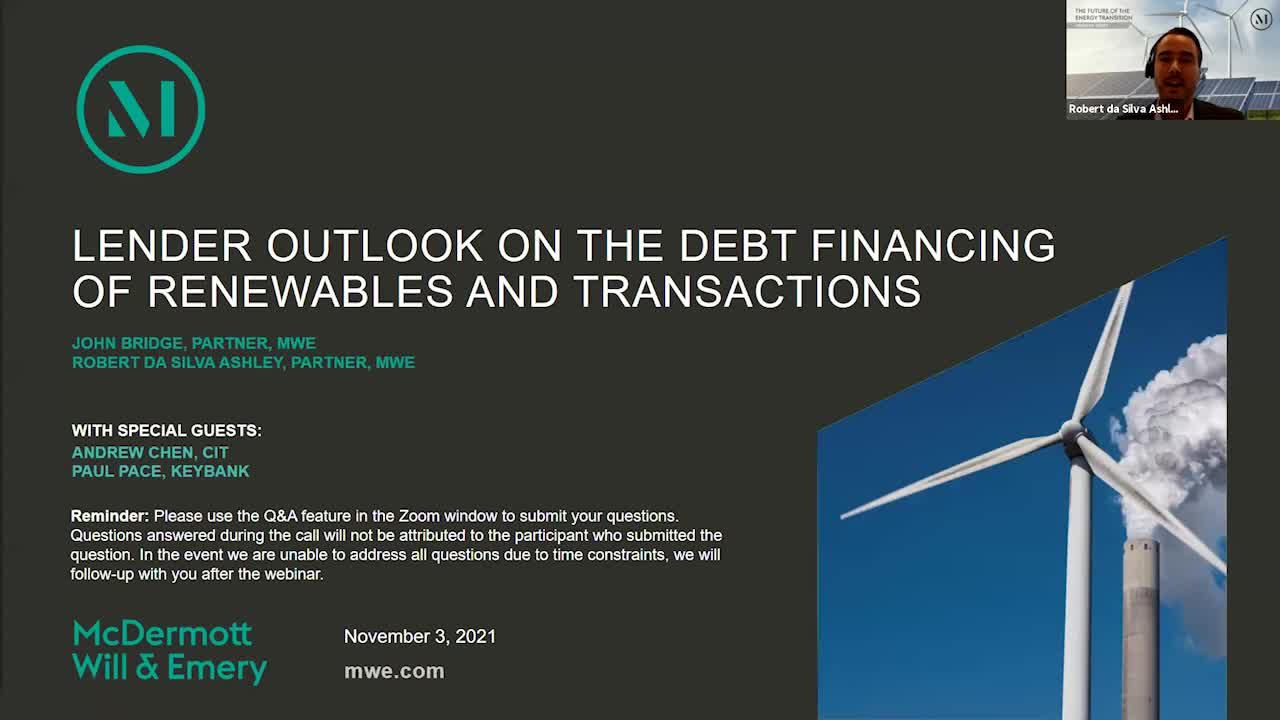
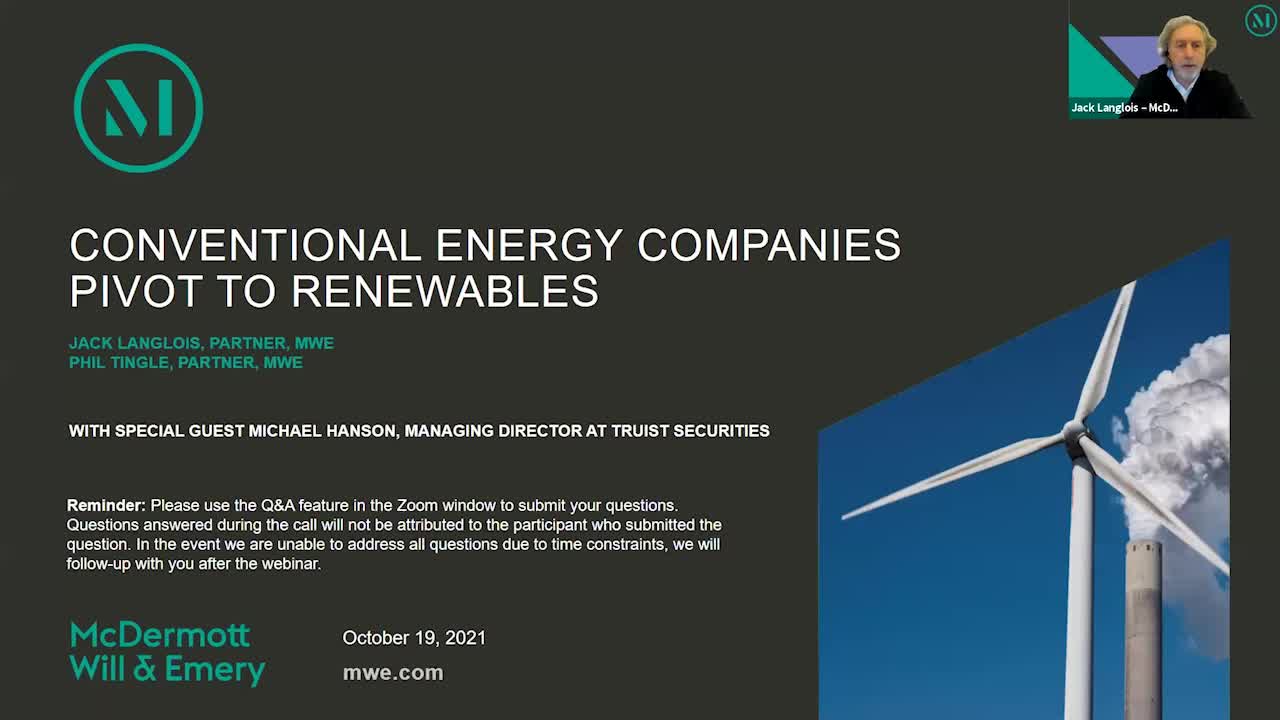
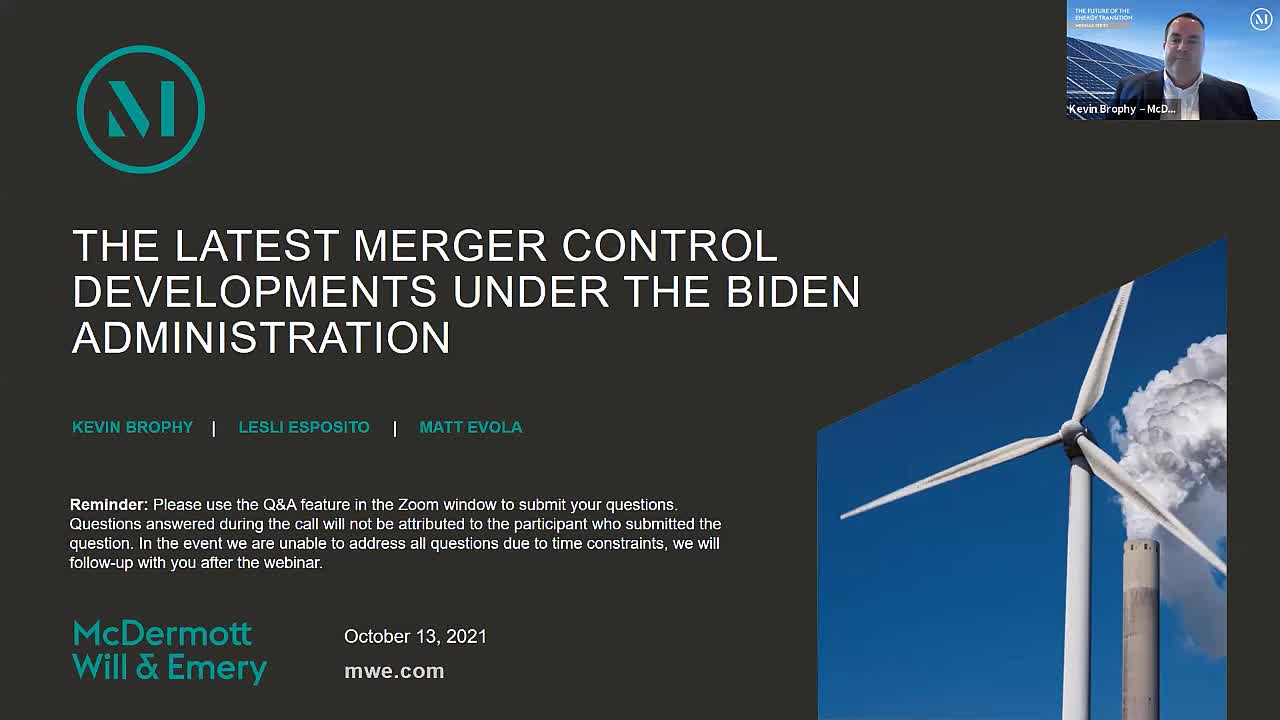 Below are key takeaways from the webinar: 1. Antitrust Agency Personnel Changes. The FTC and the DOJ Antitrust Division have recently seen leadership changes. At the FTC, US President Joe Biden appointed Lina Khan to chair, and she’s already making headlines for her efforts to “modernize” merger assessments. Chairwoman Khan has indicated that she wants the FTC to focus on addressing the “rampant consolidation” that has resulted in dominant firms across markets. She has also advocated for a holistic approach to identifying harms, a focus on power asymmetries and a need for the agency to be forward-looking. The changes she has implemented have significantly impacted merger review. At the DOJ, President Biden appointed Jonathan Kanter, who has not yet taken office but is also expected to take an aggressive approach to enforcement, to lead the Antitrust Division. 2. President Biden’s Executive Order on Antitrust. In a July executive order, President Biden indicated that antitrust enforcement would be a top priority for his administration. The order calls for a whole-of-government approach, encompassing 72 initiatives directed at more than 12 separate agencies. The order directed the FTC and the DOJ to vigorously enforce the antitrust laws by toughening the review of future mergers and revisiting anticompetitive mergers that went unchallenged. 3. Policy Changes with Practical Implications. The FTC has been especially active in announcing new policies and procedures that will likely extend the merger review timeline and open previously consummated transactions to further scrutiny. Among these changes are:
Below are key takeaways from the webinar: 1. Antitrust Agency Personnel Changes. The FTC and the DOJ Antitrust Division have recently seen leadership changes. At the FTC, US President Joe Biden appointed Lina Khan to chair, and she’s already making headlines for her efforts to “modernize” merger assessments. Chairwoman Khan has indicated that she wants the FTC to focus on addressing the “rampant consolidation” that has resulted in dominant firms across markets. She has also advocated for a holistic approach to identifying harms, a focus on power asymmetries and a need for the agency to be forward-looking. The changes she has implemented have significantly impacted merger review. At the DOJ, President Biden appointed Jonathan Kanter, who has not yet taken office but is also expected to take an aggressive approach to enforcement, to lead the Antitrust Division. 2. President Biden’s Executive Order on Antitrust. In a July executive order, President Biden indicated that antitrust enforcement would be a top priority for his administration. The order calls for a whole-of-government approach, encompassing 72 initiatives directed at more than 12 separate agencies. The order directed the FTC and the DOJ to vigorously enforce the antitrust laws by toughening the review of future mergers and revisiting anticompetitive mergers that went unchallenged. 3. Policy Changes with Practical Implications. The FTC has been especially active in announcing new policies and procedures that will likely extend the merger review timeline and open previously consummated transactions to further scrutiny. Among these changes are: